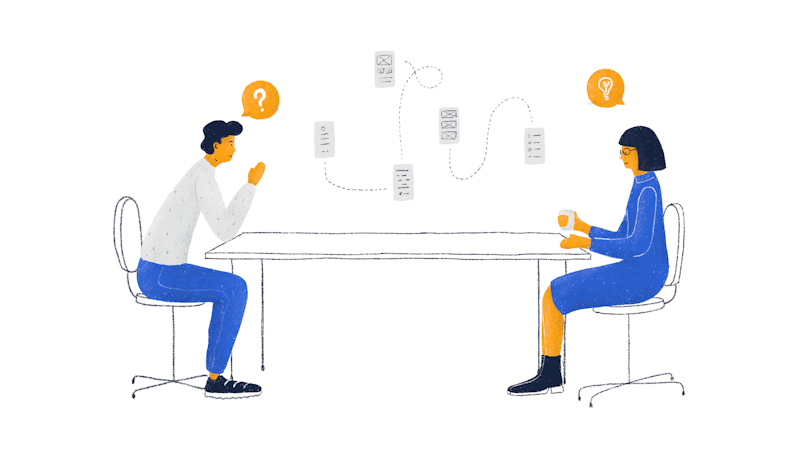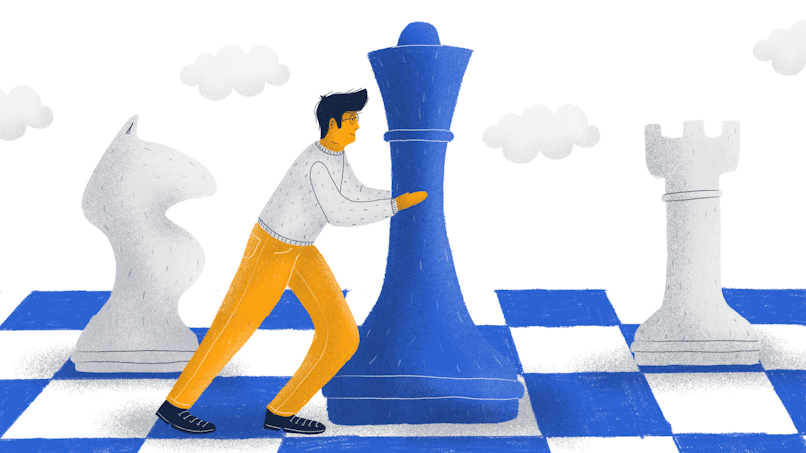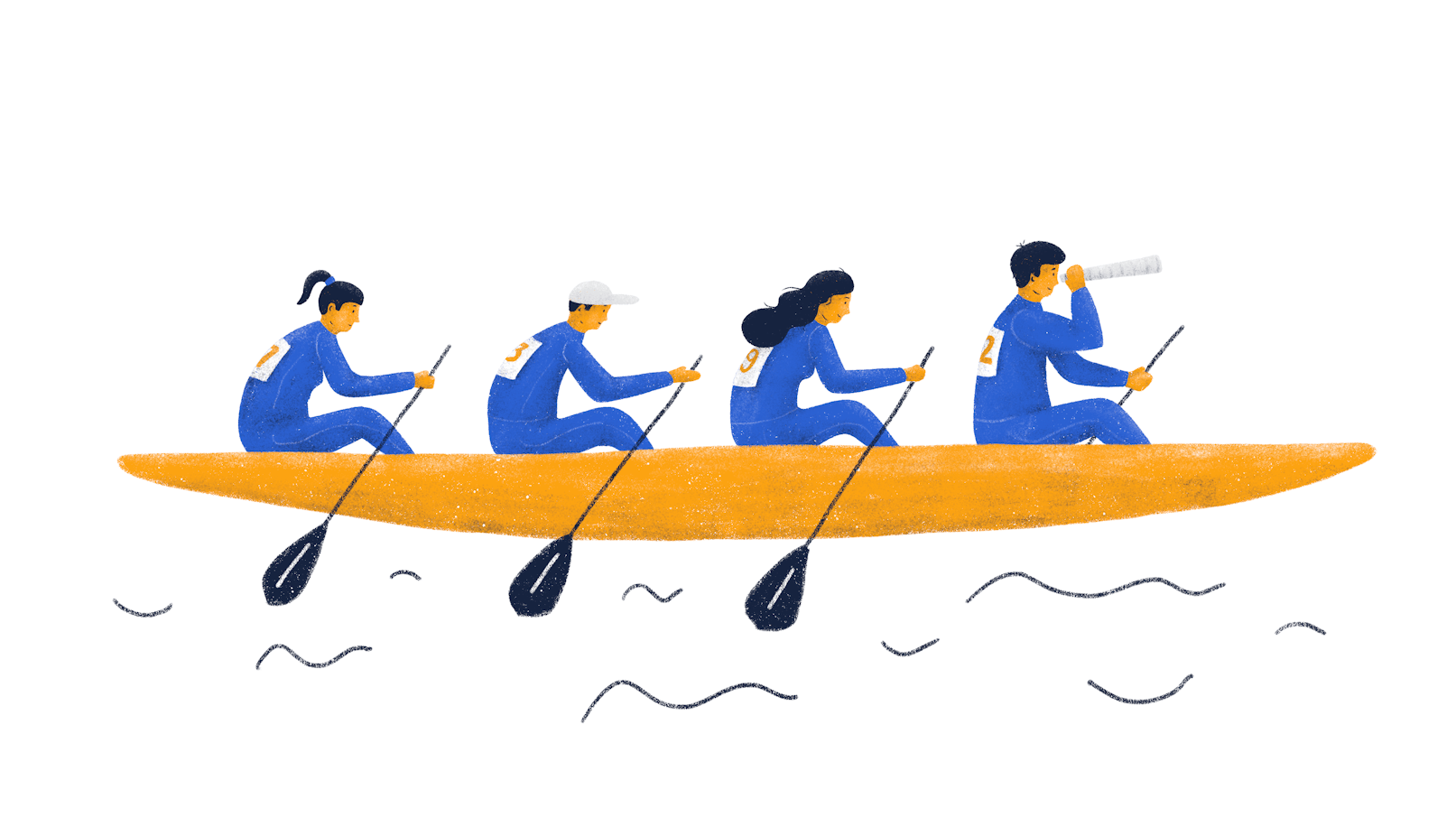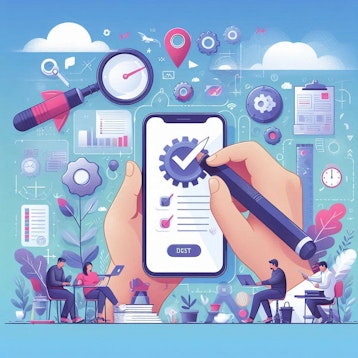Let’s talk about design leadership. What exactly does leadership look like in the world of design? How does a lead product designer become a strong design leader? And most importantly, how does your organization benefit from excellent design leadership?
These are questions we run up against every day at Adam Fard. As a UX agency, our goal is more than just delivering great design assets. We aim to always provide strong design leadership at every stage of our projects. And, ultimately, generate the best ROI for our clients.
We’re breaking down the most valuable design leadership tips we’ve picked up along the way.
Building the team
We’ll let you in on a little secret–a leader is only as good as their team. So, let’s start there. Building a team that works well together is essential to successful design leadership.
First off, you need to know your team. As a team, what are your design likes and dislikes? What are your top priorities? How do you like to collaborate? Are there any skills gaps in the team?
It may seem obvious, but you’d be surprised at how many design leaders skip this crucial first step.

Oh, and a word of advice. Remember that introducing design or workflow changes without knowing your team properly is counterproductive.
Put simply, take the time to get to know your team. The more you know, the better.
The same goes for the company.
Although some teams may work pretty autonomously from the rest of the company, the general company values and policies should still inform your decisions.
After all, the goals of the design team should be a natural continuation of the company goals. That’s why individual and team goals and priorities should be aligned.
Having a good idea of the company culture and the designers’ subculture is also essential for hiring. During the hiring process, you should look for candidates that are a good culture fit.
Soft skills and attitude matter. Remember, hard skills can be picked up quickly. Soft skills are much harder to train.

It may be tempting to jump the gun and hire the first designer with the right qualifications. But don’t.
Hiring the wrong person can wreak havoc on your team (and the business) in a number of ways:
High staff turnover is demotivating for everyone in the organization
Teams that don’t share common values tend to experience more conflict
Uneven distribution of UX talent (research, visuals, etc.) can cause skills gaps in your team and hamper performance
So, how do you make the right hiring decisions?
Involving the whole team in the candidate evaluation is a great start. Not only will your team feel involved and respected, but you will benefit from hearing diverse opinions on each candidate.
Focusing on behavior-based interview questions will also allow you to hone in on the candidate’s values and behaviors, not just their technical skills.
Managing the team
You may have handpicked your dream team, but that’s just the beginning. Even the A team had a leader. And, as the design leader, you need to manage your team.
We’d like to start by saying there’s no one-size-fits-all formula when it comes to leading your design team to success. A good design leader understands this and adapts their leadership style to the team and the context. Or, they may work on mastering leadership styles that provide the most good for the employees in their industries.
That said, there are some tried and tested design leadership techniques we recommend:
1 on 1’s
Having regular check-ins with your team is vital for the success of your team. Trust us, even if everything seems peachy, there’s a wide range of issues team members just aren’t comfortable raising in team meetings. It’s essential to create a safe, private space for your team to share their concerns.

1-on-1s are the best way to track your team’s growth and identify any roadblocks they’re facing. They’re a chance to give (and get) regular feedback and show your appreciation for your team member’s hard work.
Regular feedback means everyone in your team knows what’s expected of them, how they’re performing, and how they can improve. That’s the secret to a happy team.
Find ways to show appreciation
We’d just like to reiterate the importance of showing appreciation. Seriously. We know you appreciate your team’s work, but it needs to be communicated to them both privately and publicly.
When clients compliment your team’s work, share the feedback and a well-deserved pat on the back. If a team member reaches their quarterly goal, celebrate. You get the point.
Recognition matters. Do it more.
Prioritize growth
One of the biggest killers of engagement (and job satisfaction in general) is feeling stuck. It generally stems from a lack of opportunities for personal growth and development. This would drive even the most loyal team member to run for the hills.
And that’s usually the problem. Your most ambitious and motivated team members leave in the pursuit of personal growth, and the ones that stay are the employees who are content to dwell in their comfort zones.
How exactly do you ensure growth? We’re glad you asked.
1-on-1 check-ins are the best way to encourage and monitor personal growth at an individual level. Your feedback shows team members where they need to improve, and you can use the time to come up with an action plan together.
On a team level, set goals and pinpoint areas of improvement. Training is a surefire way to ensure your team grows. It doesn’t have to be formal training programs; we know a design team’s work is never done.
Instead, focus on informal training. Encourage your team to teach each other and share useful knowledge across the team. If you have an LMS or communication channel, share resources that will help them reach their goals.
If possible, allocate the proper people to do proper projects
Get to know what your team members excel at and what they want to get better at. Then, based on their goals, look for ways to help them practice their weaker areas.
There’s no point in setting goals if you can’t provide the environment for them to reach them. So, don’t always rely on your “go-to guy.” Instead, give other team members who aren’t strong in this area the chance to get stuck in.
We’ll be honest, it may slow things down a touch at the beginning. But, before you know it, your team will be upskilled and ready to tackle any challenge.
Establishing internal design processes/rituals
A key pillar in design leadership is implementing the right design processes. It just makes your lives easier.
Here are a few design leadership rituals you should definitely establish in your team.
Feedback
As the design leader, you set the tone when it comes to giving and receiving feedback. So, it’s your responsibility to create a 360 feedback loop in your team and an environment that welcomes feedback.
How?
Start by encouraging team members to share their work. This will spark the feedback cycle and make it a common practice in your team. Lead by example and share your own work too.

Assigning a dedicated team member, like a competency manager, to review everyone’s work is another way to promote feedback and ensure it is consistent. While the team gives general feedback, the competency manager will give very specific feedback.
Holding collective design review sessions will also create a feedback culture in your team and ensure everyone is on the same page.
Design Standups
As a design leader, you won’t only want to stay on top of monitoring project progress. You’ll also want to know what everyone else is up to.
That’s where design standups come in.
Standups keep everyone up to speed, boost design visibility, and promote collaboration on the team.
Without them, you run the risk of having a project-based set of subgroups instead of a team.
Retrospectives
Once a project ends, whether it was a hit or a miss, the team should come together to evaluate it. Retrospectives are an opportunity for the whole team to identify growth areas, tweak workflows, and celebrate the things that went well.
Building the why
A common design leadership pitfall is telling your team what to do rather than why they should do it. Sure, allocating tasks is important, but your team needs to see the bigger picture. Explain why you’re asking them to do something and what the impact on the project or business will be.
Imagine your team is doing a jigsaw puzzle, and you’re the only one who can see the image of the finished design. Context is everything, and it's the design leader’s job to provide it.
If you actively work with the team to communicate why you do what you do, not only do you make their work more meaningful, but you invite them to share their own ideas on how to move toward your vision.
When you’re presenting the why, it’s best to use real stories and real situations. For example, you could use techniques like storyboards, presentations, videos, etc.
Forging alliances
Making allies isn’t just a strategy on Survivor. It’s also a big part of design leadership. Let’s first look at why forging alliances is fundamental.
It will increase design maturity in your organization There’s a plethora of design techniques that are applicable beyond product design. Generally, only those who work closely with designers (like developers or product managers) retain some of the things they’ve seen designers do.
That’s a shame because the whole team can benefit from knowing more about design and vice versa.

Put simply, being aligned with the organization and other teams will provide much bigger opportunities for your team to collaborate and innovate.
So, if you want to share these design processes and techniques across the organization, you will need to create alliances.
Here’s how.
Communicate how and why you’re doing things to stakeholders across the business
Invite external team members to participate in projects
Encourage cross-department collaboration
Advocate and demonstrate the ROI of design
Share ownership
Communicate new findings to the whole company in an accessible way
As the design leader, you are the voice of the team both internally and externally. The more you communicate with other teams, the more likely they are to apply design techniques across the business.
Bottom line
Design leadership, like most kinds of leadership, relies on trial and error. Every team is different, but there are some fundamental techniques and design processes that can ensure you lead your team to design success.
As designers, we know the importance of empathy, efficiency, and adapting to the user. These principles can (and should) be applied to leadership. Get to know your team, figure out how to remove roadblocks, and keep them engaged with plenty of opportunities for growth. It’s not an exact science, but it’s a pretty foolproof formula.





